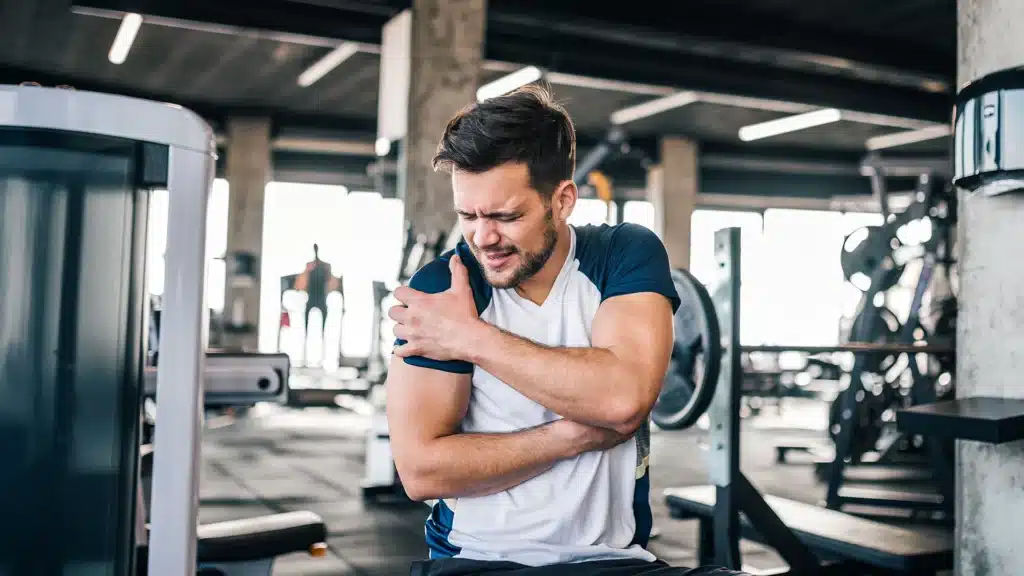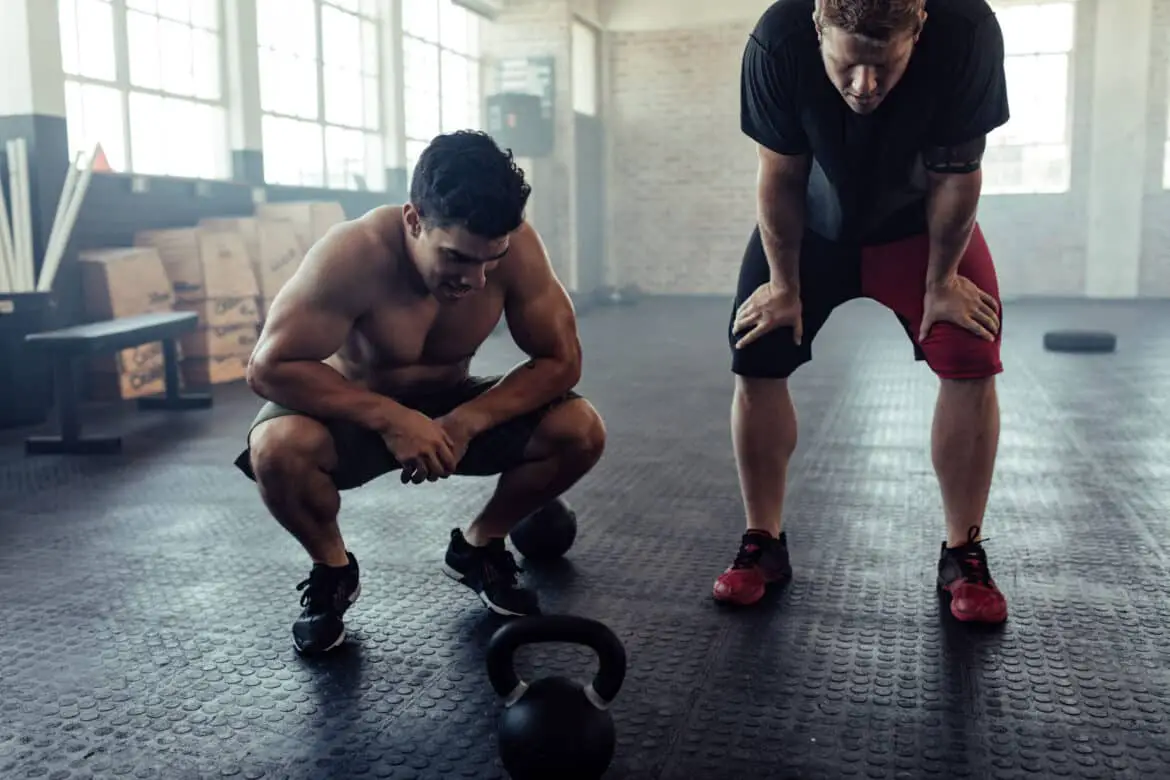Introduction
How To Not Be Sore After A Workout: Are you tired of feeling sore and achy after every workout? Do you find it difficult to continue with your fitness routine because the post-workout pain is just too much to handle? If so, you’re not alone. Many people struggle with muscle soreness after exercising, but the good news is that there are ways to minimize and even prevent this discomfort.
Exercise is an essential part of a healthy lifestyle, but it can also leave you feeling sore and stiff. This is especially true if you’re new to working out or if you’ve recently increased the intensity or duration of your workouts. The soreness you experience is known as delayed onset muscle soreness (DOMS), and it typically occurs 24 to 48 hours after exercise.
One of the most effective ways to prevent dips workout soreness is to properly warm up before exercising. A warm-up routine helps to increase blood flow to your muscles, which can reduce the risk of injury and minimize soreness. It’s important to spend at least 5 to 10 minutes warming up before each workout, focusing on dynamic stretches and movements that target the muscles you’ll be using during your workout.
Another key factor in preventing post-workout soreness is to gradually increase the intensity and duration of your workouts. Pushing yourself too hard too quickly can lead to excessive muscle damage and increased soreness. Instead, aim to gradually increase the intensity and duration of your workouts over time, allowing your muscles to adapt and become stronger.

Is a workout still effective if I not sore?
So if you regularly exercise and find you aren’t feeling as sore later in the day or even in the days after your workout, rest assured that your workout is still working – your muscles have just gotten better at dealing with the damage and recovering from it.
Many people believe that if they are not sore after a workout, it means that they did not work hard enough or that their workout was not effective. However, this is not necessarily true. The level of soreness experienced after a workout can vary from person to person and can depend on various factors such as fitness level, intensity of the workout, and individual recovery capabilities.
Soreness, also known as delayed onset muscle soreness (DOMS), is caused by microscopic damage to muscle fibers during exercise. This damage triggers an inflammatory response in the body, leading to soreness and stiffness. While soreness can be an indicator of a challenging workout, it is not the sole measure of its effectiveness.
It is important to understand that soreness is not a direct reflection of muscle growth or strength gains. In fact, some individuals may experience significant muscle growth and strength improvements without feeling much soreness. This is because the body adapts to the stress placed on it during exercise, and over time, the same workout may not cause as much muscle damage or soreness.
Additionally, soreness is not always a desirable outcome of a workout. It can interfere with daily activities and hinder performance in subsequent workouts. It is not uncommon for athletes and experienced exercisers to modify their training programs to minimize soreness and optimize recovery.
Instead of solely relying on soreness as an indicator of a successful workout, it is important to consider other factors such as improved performance, increased endurance, and overall progress towards fitness goals. These are more reliable measures of the effectiveness of a workout.
While soreness can be an indication of a challenging workout, it is not the sole measure of its effectiveness. The absence of soreness does not necessarily mean that a workout was not effective. It is important to focus on overall progress and improvements in performance rather than solely relying on soreness as a measure of success.
How long does soreness last?
Is there even such a thing? “Typically, muscle soreness peaks around day three and starts diminishing afterwards. If your soreness persists beyond three days, it means you overdid it — you pushed your muscles a little too hard. But, prolonged muscle soreness can also be a sign of an injury,” warns Murray.
Soreness is a common sensation experienced after engaging in physical activities or exercises that the body is not accustomed to. It is often referred to as delayed onset muscle soreness (DOMS) and typically occurs within 24 to 48 hours after the activity. The duration of soreness can vary depending on several factors, including the intensity of the activity, individual fitness level, and the specific muscles involved.
Factors affecting the duration of soreness:
One of the primary factors influencing how long soreness lasts is the intensity of the activity. Engaging in high-intensity exercises or activities that involve eccentric muscle contractions, such as downhill running or weightlifting, can lead to more significant muscle damage and, consequently, longer-lasting soreness. On the other hand, low-intensity activities may result in milder soreness that subsides relatively quickly.
Individual fitness level also plays a role in determining the duration of soreness. Individuals who are more physically fit and regularly engage in exercise tend to experience less severe soreness and recover more quickly compared to those who are less active. This is because regular exercise helps condition the muscles and reduces the likelihood of excessive damage and inflammation.
The specific muscles involved in the activity can also impact the duration of soreness. Some muscles are more prone to soreness due to their size, function, or the amount of stress placed on them during the activity. For example, larger muscle groups like the quadriceps or glutes may experience more prolonged soreness compared to smaller muscles like the biceps or triceps.
Managing and alleviating soreness:
While soreness is a natural response to physical activity, there are several strategies that can help manage and alleviate its effects. Engaging in light exercises or activities that target the sore muscles can promote blood flow and aid in the recovery process. Additionally, applying ice or heat to the affected area, taking over-the-counter pain relievers, and getting adequate rest and sleep can also help reduce soreness and promote faster recovery.
Is it good to feel sore after workout?
“This is completely normal and, for the most part, nothing to worry about. In fact, this is how muscle gets stronger since it builds back a little bit better each time.”
Feeling sore after a workout is a common experience for many people. It is often seen as a sign that the workout was effective and that progress is being made. However, whether or not it is actually good to feel sore after a workout is a topic of debate among fitness professionals.
On one hand, feeling sore after a workout can be an indication that the muscles have been challenged and are adapting to the stress placed on them. This can lead to increased strength and muscle growth over time. Soreness is often associated with the breakdown of muscle tissue, which is then repaired and rebuilt stronger than before. So, in this sense, feeling sore can be seen as a positive outcome of a workout.
On the other hand, excessive soreness can be a sign of overtraining or improper form during exercise. Pushing the body too hard without allowing for proper recovery can lead to injury and hinder progress. It is important to listen to your body and give it the rest it needs to repair and rebuild. Additionally, if soreness persists for an extended period of time or is accompanied by severe pain, it may be a sign of an underlying issue that should be addressed.
It is also worth noting that not all workouts will result in soreness. As the body becomes accustomed to a certain type of exercise, the muscles may not experience the same level of soreness as they did initially. This does not necessarily mean that the workout was ineffective, but rather that the body has adapted to the stress placed on it.
Does no soreness mean no growth?
There’s very little evidence to show that being sore indicates muscle damage or faster muscle growth, or that a lack of soreness means that your workout wasn’t effective.
Soreness is a common sensation experienced after intense physical activity, especially when engaging in resistance training or weightlifting. Many people believe that muscle soreness is an indicator of muscle growth and progress. However, the relationship between soreness and muscle growth is not as straightforward as it may seem.
The science behind muscle soreness:
When we engage in strenuous exercise, our muscles experience microscopic damage to the muscle fibers. This damage triggers an inflammatory response in the body, leading to the sensation of soreness. This process is known as delayed onset muscle soreness (DOMS). DOMS typically peaks within 24 to 48 hours after exercise and gradually subsides over time.
The misconception:
Many individuals associate muscle soreness with muscle growth, believing that the more sore they feel, the more their muscles are growing. This misconception stems from the belief that muscle growth occurs solely through the process of muscle damage and repair. While muscle damage is indeed a part of the muscle growth process, it is not the only factor at play.
The role of muscle tension and progressive overload:
Muscle growth, also known as hypertrophy, is primarily stimulated by muscle tension and progressive overload. Muscle tension refers to the force exerted on the muscles during exercise, while progressive overload involves gradually increasing the demands placed on the muscles over time. These two factors are crucial for muscle growth and can be achieved without experiencing significant soreness.
While muscle soreness can be an indicator of muscle damage and inflammation, it is not necessarily a direct measure of muscle growth. Muscle growth is a complex process that involves various factors, including muscle tension and progressive overload. Therefore, the absence of soreness does not necessarily mean that no growth is occurring. It is important to focus on proper training techniques, progressive overload, and adequate recovery to maximize muscle growth and overall fitness progress.
Does soreness mean muscle growth?
“Muscle soreness occurs because muscle and the connective tissue around it get damaged during exercise,” explains Dr. Hedt. “This is completely normal and nothing to worry about, though. In fact, it’s needed for muscle growth, since muscle is built back stronger during this repair process.”
Soreness is a common sensation experienced after engaging in physical activities, particularly those that involve intense or unfamiliar movements. Many individuals associate muscle soreness with muscle growth, believing that the discomfort is a sign of progress. However, the relationship between soreness and muscle growth is more complex than it may seem.
Understanding Muscle Soreness:
Muscle soreness, also known as delayed onset muscle soreness (DOMS), typically occurs 24 to 48 hours after exercise. It is characterized by stiffness, tenderness, and aching in the muscles involved in the activity. DOMS is believed to be caused by microscopic damage to muscle fibers, inflammation, and the release of certain chemicals.
The Connection to Muscle Growth:
While soreness may be an indicator that muscles have been challenged, it does not necessarily mean that muscle growth has occurred. Soreness is primarily a result of the eccentric phase of exercise, which involves lengthening the muscle under tension. This type of muscle contraction can cause more damage to the muscle fibers, leading to greater soreness.
Factors Influencing Muscle Growth:
Muscle growth, also known as hypertrophy, is a complex process that involves various factors. While soreness may be a part of the equation, it is not the sole determinant of muscle growth. Other factors, such as progressive overload, proper nutrition, and adequate rest, play crucial roles in stimulating muscle growth.
Soreness is not a direct indication of muscle growth. While it may be a byproduct of challenging workouts, it is important to consider other factors that contribute to muscle growth. Incorporating progressive overload, maintaining a balanced diet, and allowing sufficient recovery time are essential for maximizing muscle growth and overall fitness progress.
Post-workout soreness, also known as delayed onset muscle soreness (DOMS), can be quite uncomfortable and hinder your ability to continue with your fitness routine. However, there are several effective strategies that can help prevent or minimize post-workout soreness.
1. Gradual Progression: One of the most important strategies is to gradually increase the intensity and duration of your workouts. This allows your muscles to adapt and become stronger over time, reducing the likelihood of excessive soreness.
2. Warm-up and Cool-down: Properly warming up before your workout and cooling down afterwards can help prepare your muscles for exercise and prevent excessive soreness. Incorporate dynamic stretches and light cardio exercises into your warm-up and static stretches into your cool-down.
Are there any specific exercises or stretches that can help alleviate muscle soreness?
Yes, there are specific exercises and stretches that can help alleviate muscle soreness after a workout. One effective exercise is foam rolling, which involves using a foam roller to apply pressure to tight or sore muscles. This can help release tension and improve blood flow, reducing soreness. Another exercise that can help is light cardio, such as walking or cycling, which can increase blood flow and promote muscle recovery.
In terms of stretches, static stretching can be beneficial for alleviating muscle soreness. This involves holding a stretch for a prolonged period of time, which can help improve flexibility and reduce muscle tension. Dynamic stretching, which involves moving through a range of motion, can also be effective in reducing soreness. Additionally, incorporating yoga or Pilates into your routine can help improve flexibility and reduce muscle soreness.
How can nutrition and hydration play a role in reducing post-workout soreness?
Nutrition and hydration are crucial factors in reducing post-workout soreness. Proper nutrition before and after a workout can help provide the necessary nutrients for muscle recovery and repair. Consuming a balanced meal or snack that includes a combination of carbohydrates, protein, and healthy fats can help replenish glycogen stores, reduce inflammation, and promote muscle protein synthesis.
Hydration is also essential for preventing post-workout soreness. Dehydration can lead to muscle cramps and increased muscle soreness. It is important to drink enough water before, during, and after exercise to maintain proper hydration levels. Additionally, consuming electrolyte-rich fluids, such as sports drinks or coconut water, can help replenish electrolytes lost through sweat and further aid in reducing muscle soreness.
Are there any recovery techniques or tools that can aid in minimizing muscle soreness?
Yes, there are several recovery techniques and tools that can help minimize muscle soreness after a workout. One effective technique is foam rolling, which involves using a foam roller to apply pressure to specific muscles to release tension and improve blood flow. Foam rolling can help break up adhesions and knots in the muscles, reducing soreness and promoting faster recovery.
Another useful tool for muscle recovery is a massage gun. These handheld devices use percussive therapy to target specific muscles and provide deep tissue massage. The rapid pulses from the massage gun can help increase blood flow, reduce muscle tension, and alleviate soreness. Using a massage gun after a workout can help speed up the recovery process and prevent excessive muscle soreness.
What are some common mistakes people make that can contribute to increased post-workout soreness?
One common mistake that people make is not properly warming up before their workout. Skipping a warm-up can lead to increased muscle soreness because the muscles are not adequately prepared for the intensity of the exercise. A warm-up should include dynamic stretches and light cardio exercises to increase blood flow to the muscles and improve flexibility.
Another mistake is pushing too hard and overtraining. While it’s important to challenge yourself during workouts, pushing beyond your limits can lead to excessive muscle damage and inflammation, resulting in more soreness. It’s crucial to listen to your body and give yourself enough time to recover between intense workouts.
Additionally, not properly fueling your body before and after exercise can contribute to increased post-workout soreness. Without proper nutrition and hydration, the muscles may not have enough energy to perform optimally, leading to increased fatigue and soreness. It’s important to consume a balanced meal or snack containing carbohydrates, protein, and healthy fats before and after workouts to support muscle recovery and reduce soreness.

Conclusion
After a strenuous workout, it is common to experience muscle soreness and discomfort. This post-workout soreness, also known as delayed onset muscle soreness (DOMS), can make it difficult to perform daily activities and can discourage individuals from continuing their exercise routine. However, there are several strategies that can help alleviate post-workout soreness and promote faster recovery.
Firstly, it is important to properly warm up before starting any exercise routine. A warm-up session helps increase blood flow to the muscles, preparing them for the upcoming workout. This can help reduce the risk of injury and minimize post-workout soreness. Incorporating dynamic stretches, such as arm circles or leg swings, can also help loosen up the muscles and improve flexibility.
Secondly, it is crucial to listen to your body and gradually increase the intensity and duration of your workouts. Pushing yourself too hard or doing too much too soon can lead to excessive muscle soreness. It is recommended to start with lighter weights and shorter workout sessions, gradually increasing the intensity and duration over time. This allows your muscles to adapt and become stronger without causing excessive soreness.
Additionally, proper nutrition and hydration play a vital role in preventing post-workout soreness. Consuming a balanced diet that includes an adequate amount of protein, carbohydrates, and healthy fats can provide the necessary nutrients for muscle repair and recovery. Staying hydrated before, during, and after exercise helps flush out toxins and reduces the risk of muscle cramps and soreness.
Lastly, incorporating active recovery techniques can help reduce post-workout soreness. Engaging in light exercises, such as walking or swimming, on rest days can promote blood flow to the muscles and aid in their recovery. Foam rolling or using a massage ball can also help release tension and alleviate muscle soreness.

